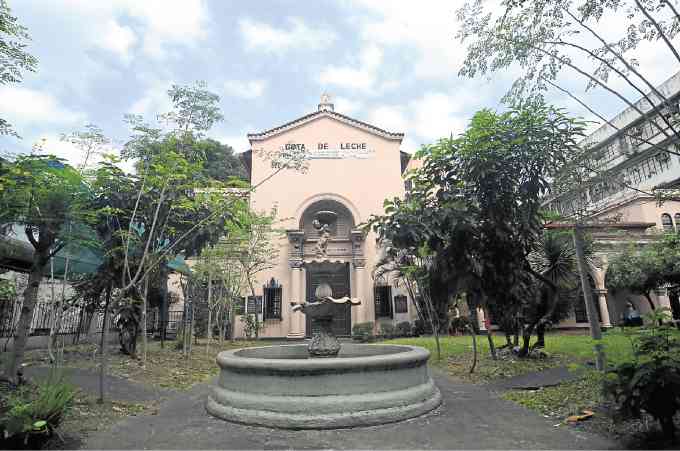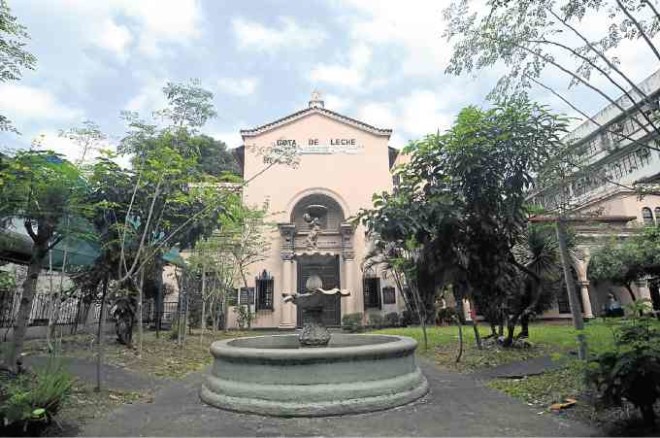
Standing quietly for more than a century, amid the noise and frenzy of Manila’s university belt, is Gota de Leche, a quaint structure built in the classical style that is rich in history and charitable tradition.
While private sponsors have been generous to the feeding program, Gota de Leche president Augusto “Toti” Villalon wants to convince the government to support a separate plan to restore the historic building that already has been given heritage status by local and foreign bodies.
“No holds barred, we need P30 million to replace the entire roof, all trusses holding up the roof and address the termite and water damage. The building has also gone through major floods since [Typhoon] “Ondoy.” We have to fix the drainage and make some minor electrical repairs,” Villalon told Lifestyle.
There has been no fire since construction began in 2014. But the earth shook when school officials tore down the engineering building that caught fire at the University of the East campus across S.H. Loyola Street a few years back, he noted.
“But it’s generally wear and tear. Old age because the building is now more than 100 years old. Small things like hinges of windows, and in case of repainting, there is a special paint created by conservator Tats Manahan to remain faithful to the original coloring and methods used,” Villalon added.
“I also want to relandscape the front lawn and develop a vegetable garden so we can give away the vegetables to the mothers. Under the law, we cannot feed children from infants to the age of three. So we feed the mothers malunggay and rice and give them food substitutes,
Villalon, an architect, lamented that gaining the support of government agencies has been challenging—despite the building gaining an honorable mention in the Unesco Asia Pacific Heritage Awards for Cultural Heritage Conservation in 2003 and an Important Cultural Property citation by the National Museum in 2014.
(A volunteer pointed out that a TV network used the headquarters’ second floor to shoot a teleserye starring Coco Martin.)

“If we talk about pedigree, this building definitely has it. We are a national monument… The building is an important cultural treasure [which means] it can apply for funding from the government, but the government has never [given funding] for a privately-owned building,” he said.
Asked to elaborate, Villalon explained: “Payag ang batas that the government can support [a project like ours], but it has not been done. They [government officials] can say, ‘we cannot give money to a private organization because a private organization might make money out of the government [donation]. We tell them we don’t make money.”
Villalon said among the government bodies that Gota de Leche intends to convince to support the restoration of the building are the National Museum, the National Commission for Culture and the Arts and the Tourism Infrastructure and Enterprise Development Authority under the Department of Tourism.
Gota de Leche’s history should be enough to convince any government body.
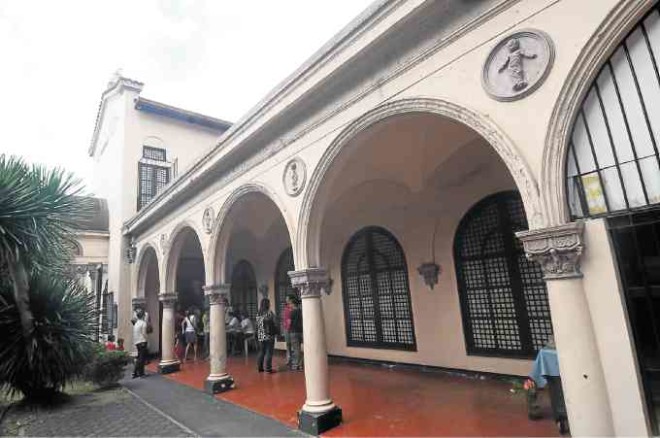
In 1905, José Rizal’s sister, Trinidad, joined civic leader Concepcion Felix and other educated women to form Asociacion Feminista Filipina to uphold women and children’s welfare.
The group focused on infant mortality, noting that eight out of 10 newborn died before reaching the age of three. In time, doctors Manuel Guerrero and Joaquin Quintos discovered that beri-beri caused by tainted milk of infected mothers was the cause.
The discovery led to the founding of the Gota de Leche movement and inspired the establishment of a milk station and dairy based in suburban Pasay.
Among the initial programs were a socialized distribution system of pasteurized cow’s milk and the formulation of maternal nutrition and education programs.
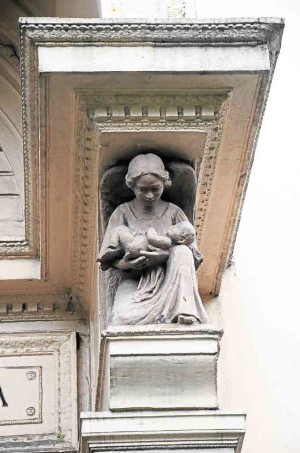
Medical professionals eventually joined the movement. Later, a group known as La Proteccion de la Infancia gathered business, civic leaders and doctors to form the country’s first independent charity organization.
World War II did not hinder its operations.
In 1950, then president Natividad Almeda-Lopez established the Manila Children’s Hospital, the country’s first pediatric center. The institution’s doctors, Florencio Quintos and Lino Ed. Lim, discovered the cause of hemorrhagic fever among its patients, leading the World Health Organization to convene the first Asian Medical Congress in 1958.
Gota de Leche is now under La Proteccion de la Infancia Inc.
Villalon recalled he was invited to lead the first restoration of the building in 1999 by Almeda-Lopez’s daughter Lulu.
The first thing Villalon noticed was a group photo of the Gota de Leche founders mounted on the wall. Villalon said he saw the framed photo regularly in the home of his grandfather José Fabella, a former secretary of health.
Lulu asserted that the photograph at Gota de Leche was the original.
“That’s what drew me in and made me stay. All the board members today are descendants of former board members,” Villalon said.
Workers removed the fake plywood ceilings (“It was the trend to put those in the 1960s”) in the first restoration and discovered plaques on the wall near the ceiling that mentioned philanthropist Teodoro Yangco as the donor of the land where the headquarters was built.
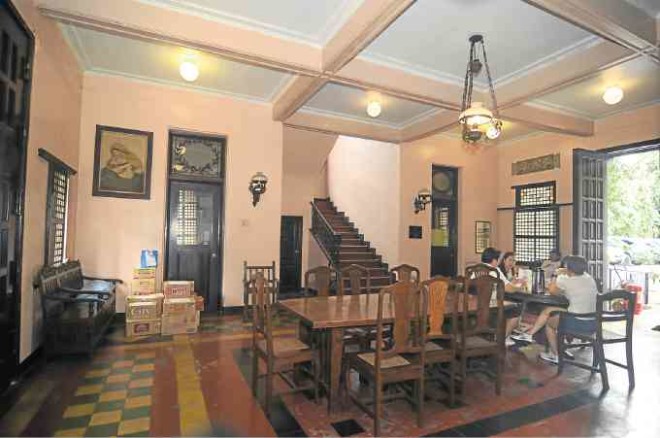
Volunteers also discovered an old vault that contained the original plans for the building drafted by the brothers Arcadio and Juan Arellano. It also had the original accounting books and records of board meetings.
Villalon said that while the building served as venue for the feeding program, it was constructed as a house and even had a horses’ stable that has been converted into Gota de Leche’s office.
“If you notice the portico, it is patterned after that in the children’s orphanage in Florence, the Hospital of the Innocents (Ospedale degli Innocenti designed by Filippo Brunelleschi), it has the same motif,” he added. —CATHY CAÑARES YAMSUAN

